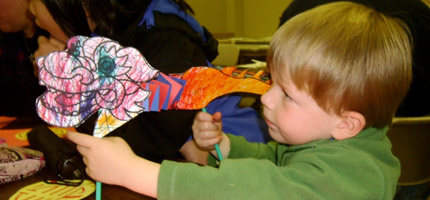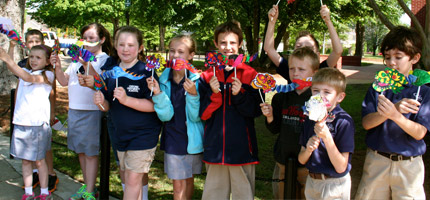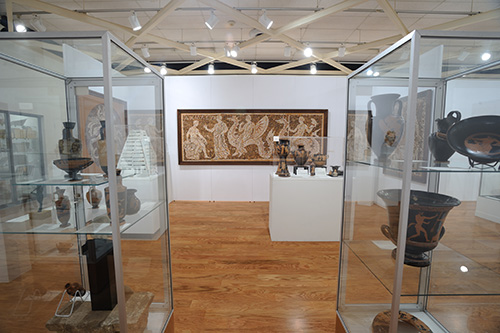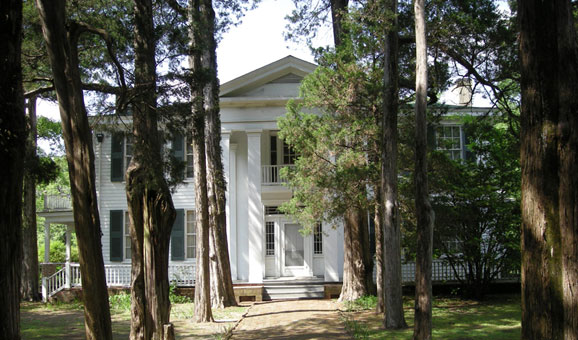Editor’s note: This speech by Robert Saarnio, director of the University Museum & Historic Houses, explains this influential thinker’s vision of the expanding “Creative Economy.” This is a resource Saarniio believes has great value in Oxford as a literary, artistic and architectural hub of the Mid-South.

The University of Mississippi Museum has management and stewardship responsibility for the largest collection of art and artifacts between Jackson and Memphis, and the National Historic Landmark William Faulkner residence, Rowan Oak.
We have a 20,000-object collection which represents material from across several millennia, and multiple continents and cultures: including the largest and finest collection of Greek and Roman antiquities in the South, and significantly growing collection of Southern folk, vernacular, and self-taught art.
Between the Museum and the Faulkner site, we are visited by and serve approximately 40,000 visitors annually. We are now serving record numbers of schoolchildren — not only in Oxford and Lafayette County, but in a one hour-radius from Oxford, which includes underserved school populations, and deeply under-resourced districts where art and culture have been diminished or eliminated from the curriculum. Our Traveling Trunks program in which we train smart University students under Museum staff supervision to take collections-based curricula out to classrooms, is a proud 30-year-plus tradition at the Museum, which now travels to five north Mississippi counties.

At Faulkner’s Rowan Oak we tallied a recent three-month (January / February/ March) Visitor Sign-in log at and saw 46 U.S. states represented, and 26 foreign countries. Over 75 percent of those Rowan Oak visitors were non-Mississippi residents.
Some other national statistics are also very telling: one that catches many people off-guard is that the American Alliance of Museums and the Federal Institute for Museum & Library Services estimates that there are more than 850 million annual museum visits in the U.S. — more than the attendance at all major league sporting events combined.
The U.S. Conference of Mayors is cited its assessment that for every $1 a municipality invests in cultural organizations, including museums, $7 is returned to the public coffers. We are all aware that cultural tourists are very well-documented to spend more and stay longer than other categories of tourists.
Museums annually invest more than $2 billion in educational programs each year, serving lifelong learners from pre-K through senior years. Museums in this country welcome some 90 million schoolchildren each year, and in some states museums are taking the lead in writing the state curriculum standards for education.
So we know at the University of Mississippi Museum and its Rowan Oak historic site that we are having impacts and outreach outcomes within the context of the local economy — but we are not resting on any laurels whatsoever.

As we launch our 75th anniversary year — the Museum having been opened to the public on Aug. 24, 1939 — we are planning exhibitions that push the boundaries of what we’ve traditionally offered. Our Faith Affirmed – Works from the Gordon W. Bailey Collection celebrates a transformative gift by noted scholar and collector Gordon W. Bailey of over 70 artworks created by African American self-taught artists from the South, and other exhibitions include a complete showing of the Museum’s 57 William Eggleston photographic print; and a partnership with Bloomingdales of New York to exhibit the 48 haute couture NFL football helmets they commissioned from high-profile fashion designers.
At Rowan Oak, we are initiating new tour innovations, and restoring a Sunken Garden area that Faulkner built for his daughter Jill’s wedding in the 1950s. Visitors will soon be able to hear projected audio of Faulkner’s legendary Nobel Prize acceptance speech. And we’re augmenting the room text panels to tell more of the story of each interior space.

Having started my Museum career in a North Shore of Boston museum — the Peabody Essex in Salem — I was able to observe there the total makeover of that city of 35,000 when the Museum grew dynamically from serving 135,000 visitors a year to well over half a million annually. A more dramatic case study of a museum-based urban ‘creative economy’ transformation does not exist.
Museums in general add cultural luster and appeal to their communities. Scholar Richard Florida’s hugely influential 2002 study “The Rise of the Creative Class” — with its Urban Creativity Indexes and its analysis of national urban competition to attract creatives — mentions museums and galleries prominently among its appeal factors. I think with good and plausible reason, for the community enrichment and even community-center functions we fulfill.
Another factor that really comes into play is authenticity. The real thing versus the replica, the reconstruction, the copy. Attendees at the recent state historic preservation conference heard us report on the subject of authenticity as regards Rowan Oak, but also our Museum. Museums are among the very most trusted institutions in every such poll taken nationally, because our great advantage is that we offer up-close and personal encounters, in serene and beautiful settings ,with the real object, the authentic original.

For Rowan Oak, the authenticity advantages are extraordinary, given that every room is filled with the objects that Faulkner lived with for those 32 years in the house. He could walk upstairs to his bedroom tomorrow and for the most part not bat an eye.
Every day I walk in the door of the Museum I bless the fact that I came to Oxford two years ago next month, and that I have the true privilege of living and working in one of North America’s great small cities. The Museum and Rowan Oak have every intention of remaining good partners with our peer cultural institutions — we hold firmly to our values of accessibility to all; dynamic and ever-changing exhibitions; commitment to children, families and lifelong learners; and a continual striving for innovation and creativity in how we work, and what we offer.
You can contact Mr. Saarnio about these remarks at rsaarnio@olemiss.edu.
